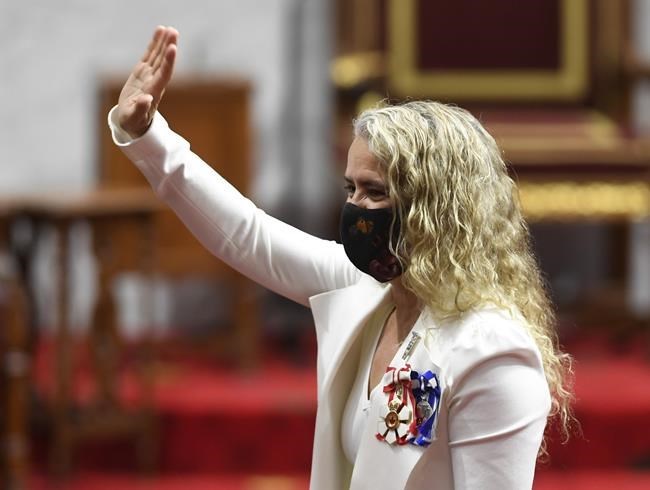OTTAWA — The Liberals are reversing course on a decision to wind down a federal wage subsidy, vowing in their throne speech to extend the program for businesses harmed by COVID-19 into next year.
Over the summer the government decided to start scaling back the program through the rest of the year by providing a smaller subsidy with each passing month.
The criteria for using the program were also eased.
But the Liberals were warned that small businesses that have used the program would need the help into 2021 as their revenues stayed low while costs remained steady.
Today, the Liberals' throne speech promised to extend the subsidies to summer 2021, acknowledging the economic situation facing many employers is still fraught.
And for workers who lose their jobs, the throne speech also promises to put everyone under the employment insurance system, making it the only vehicle for benefits for hard-hit workers even if they previously didn't qualify for the decades-old program.
The Canadian labour market has been hammered by the pandemic, when lockdowns in March and April led to a loss of three million jobs and 2.5 million more workers having their hours slashed as non-essential businesses were ordered closed.
As of August, the country has recouped about two-thirds of those job losses but that recovery has been uneven: Women, youth, low-wage and visible minority workers haven't rebounded as quickly.
Statistics Canada reported that about one-fifth of the labour force was considered underutilized in August, a combination of people who were unemployed, who were not looking for jobs but wanted to work, and who worked less than half their usual hours — usually due to the pandemic.
The throne speech vows to use federal spending to get back the last million or so jobs, including through direct investments in the social sector and incentives for employers to hire and retain workers. The extension of the wage subsidy is touted as another way to create jobs.
As of Sept. 13, the government had paid out just over $35.3 billion in benefits to 312,750 different companies, although the number of workers covered by the subsidies has fallen in recent weeks.
Dan Kelly, president of the Canadian Federation of Independent Business, said the extended wage subsidy will be a help for small companies, as well a promise to expand an emergency loan program to cover fixed costs, like wages and rent.
Kelly said the throne speech's promise of targeted help for businesses subjected to localized lockdown is also a positive sign for nervous owners.
"The speech is very much focused on ongoing COVID-19 relief and supports to business and I think they're very much necessary," he said in an interview.
"I wish that weren't the case, but unfortunately, that's where we are and it's good news to hear the government indicate that's in the works."
At the same time, the Liberals plan to wind down the Canada Emergency Response Benefit, which has paid out almost $78 billion in benefits to nearly 8.8 million people.
Anyone covered by employment insurance will move to that program with access eased, they say. Those who don't qualify, such as self-employed and gig workers, will be pushed to a new 26-week "recovery" benefit.
But the throne speech says that new benefit, which Parliament still has to approve, will be a transitional program before moving every worker in the country onto EI.
There is also a pledge in the throne speech to update the government's technology systems. That will be a must for EI because the core system that delivers payments is more than 40 years old.
What was missing from the speech was detail about the promises at a time when companies and workers are looking for specifics amid widespread uncertainty, said Perrin Beatty, president of the Canadian Chamber of Commerce.
"What we've seen is a series of spending programs to respond to the pandemic, but what we haven't seen is a COVID management strategy," he said. "Where we've been to date is largely responding to the pandemic instead of managing it, and there's a big difference between the two."
The throne speech promised a fiscal update this fall, but didn't make any reference to a fiscal anchor — a measurement the government will use to judge its success in managing the treasury, such as a target for the federal deficit.
"The fall economic statement must deliver a fiscally responsible and disciplined plan to restore confidence, promote investment and spur job creation," Goldy Hyder, president of the Business Council of Canada, said in a statement.
A note from a trio of BMO experts estimated the deficit would be between $340 billion and $375 billion by the end of the fiscal year, and around $200 billion next year with some of the signals sent in the speech.
This report by The Canadian Press was first published Sept. 23, 2020.
Jordan Press, The Canadian Press

